Media | Articles
In the garage, sometimes less is more
After a short hiatus of hands-on projects, I’ve been returning to the garage to deal with a few tasks that have been sitting on my back burner. Top of the list is sorting through the various parts and pieces that have accumulated in the 10 years since I moved to Michigan and began to hoard the parts and pieces that will certainly get used one day.
The sad theme of my cache? Stripped nuts and bolts.
Most of it is OEM Honda hardware. I can still buy it, but I fear the day I won’t have that option. I could replace all of it with socket-headed cap screws—the threads are standard metric—but the flanged head with the hemispherical dent in its center is a touch that I like on my bikes. It’s the correct stuff, and a good build deserves it. Sadly, the previous owners of the motorcycles I’ve bought didn’t have such respect for the little things.
Many of the bikes’ nuts and bolts have rounded-off corners or are otherwise damaged in a way that suggests an inconsiderate mechanic rather abuse on the road or trail. With my thrifty (read: cheap) nature, the bikes I bring home rarely come from loving homes. The last one, an ’86 Honda XR250R, came from a dirt lot adjacent to a house whose roof had collapsed. I think the 14-year old who sold me the bike was squatting in it.
Humans have advanced to the point where we’ve made so many tools that one person could never own them all if they tried. The sheer number of available tools has made it easy for users to reach for the wrong one. If it kinda works, it becomes their go-to.
Marketplace
Buy and sell classics with confidence
That doesn’t make that tool the right choice.
Allow me to present an example, which happens to be a personal pet peeve: 12-point sockets.
Go to your favorite local hardware store and look into the bins of nuts and bolts. Then put your car on jack stands (if it’s already there, I’m sorry) and spend five minutes poking around and noting the hardware that holds the thing together.
Just leave this window open in your browser. It’ll be here when you get back.
I promise.
What did you find? Most of those fasteners have six sides with six tidy corners. What isn’t a hex-, Torx-, or Phillips-head is likely hexagonal in shape and would fit perfectly into a six-point socket. It would also fit in a 12-point socket—but poorly.
I can state this as fact because science backs me up. Look closely at the two sockets, of the same size, side by side. Notice that the six-point socket has thicker walls than the 12-point one. Also, look at the facets inside. If you have a quality set of sockets, these surfaces won’t actually be flat; instead, each section will have a slight arch to it.
This concave surfacing helps the socket engage the fastener farther towards its center, on what’s called the fastener’s flank. Together, the six-point’s superior rigidity and optimal contact point transfer torque more evenly from the socket to the fastener. This design also deflects less twisting power during high-torque situations, like those produced when you’re wrestling with a corroded or very tight piece of hardware.
According to a patent filing by Snap-on tools, the goal of a socket design is to “engage the flank of the fastener at a distance of about 30 to 60 percent of half a length of the flank away from the corner of the fastener.” This prevents the fastener’s corners from being wiped off by the socket, leaving you with a stressful evening of dealing with a newly round bolt.
Before you say it, yes—I will happily admit that there are three parts to this equation: Tool, workpiece, and user.
Think about all the times you’ve heard people complain about modern “cheese-grade” hardware. This is the stuff that is unmarked and made of an alloy that seems to be heavy on the sugar and spice but has none of the nice carbon, zinc plating, or heat treatment found on grade-five and above hardware.
Low-grade hardware commonly found on budget-focused products, combined with a less-than-conscientious user who selects a sub-optimal tool is a recipe for failure and frustration. It is up to the user to select the proper tool for the job.
Often, the perceived ease of engagement offered by a 12-point socket is traded for greater risk of rounding off hardware and creating even more of a pain.
So, I propose a rebranding of 12-point sockets in your mind: They are speciality tools.
There are twelve-point fasteners and, of course, that means you should be prepared for them. An 8mm 12-point can stand in for the special XZN hardware found on Volkswagen Auto Group cars, just as one example. That’s a pretty narrow use case, though. Oh, and I have to mention ARP bolts, along with the other aftermarket hardware that surely exists. Heck, I could swear I’ve seen factory-installed connecting-rod bolts with 12-point heads.

Twelve-point sockets always seem to be around, though. Look in any one of the starter toolkits at your local hardware store, and you’ll find a matched set of six- and 12-point socket duplicates.
I chalk this up to two reasons: It is handy to have two sockets of the same size if only because you might lose one or need two in order to separate a nut-and-bolt union. Also, notice how so many of those kits are sold on tool count: high number of tools for a low price. Just $250 for 290 tools, and these kits often go on sale around the end of the year for close to $100, even.
That tool number is a big part of the manufacturer’s value play. The reality is that duplicates—and the practice of counting each screwdriver tip that can be inserted into the single screwdriver included in the kit—builds value in the customer’s mind. It also means that we view each tool in those sets as something we need and must use. That’s just not true, though. Even with these toolkits.
Look, in most situations, a 12-point will do the job. But if a fastener gets tight, rusty, slightly rounded, or otherwise damaged, why take the risk of starting with an inferior tool and hoping that the proper one can save you if things go wrong?
The sales pitch that double the points is handy for when a bolt is slightly hidden or tough to get to is backwards. Yes, a 12-point socket can engage a six-point bolt every 30 degrees of rotation, but if you’re are unable to rotate a 6-point socket to get settled onto a bolt, how are you going tighten or loosen the bolt once the socket’s engaged? Should the inferior socket damage the hardware, you can only hope that a six-point can save the day. Even if it does, you’ve now wasted time doing the job twice. Just use the right tool the first time and save yourself the stress of having to replace rounded bolts.
Or don’t. I fully recognize it’s your shop, your tools, and your hands. You can take the risk if you want.
But if you are the person who rounds off hardware with a 12-point, uses a six-point to remove it, and then just goes ahead and reinstalls it … would you please stop selling me motorcycles?
***
Check out the Hagerty Media homepage so you don’t miss a single story, or better yet, bookmark it. To get our best stories delivered right to your inbox, subscribe to our newsletters.
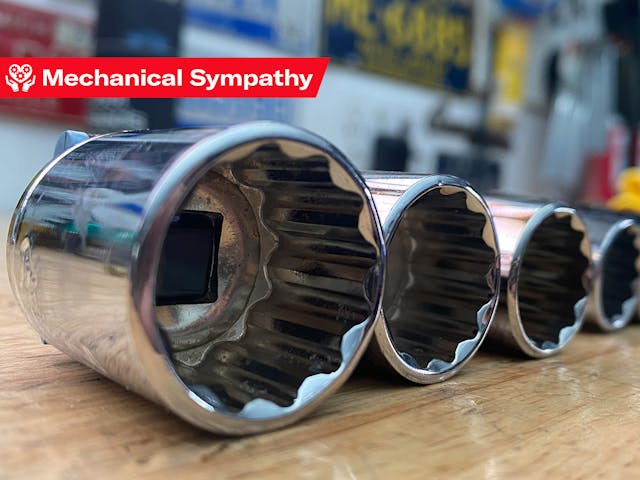

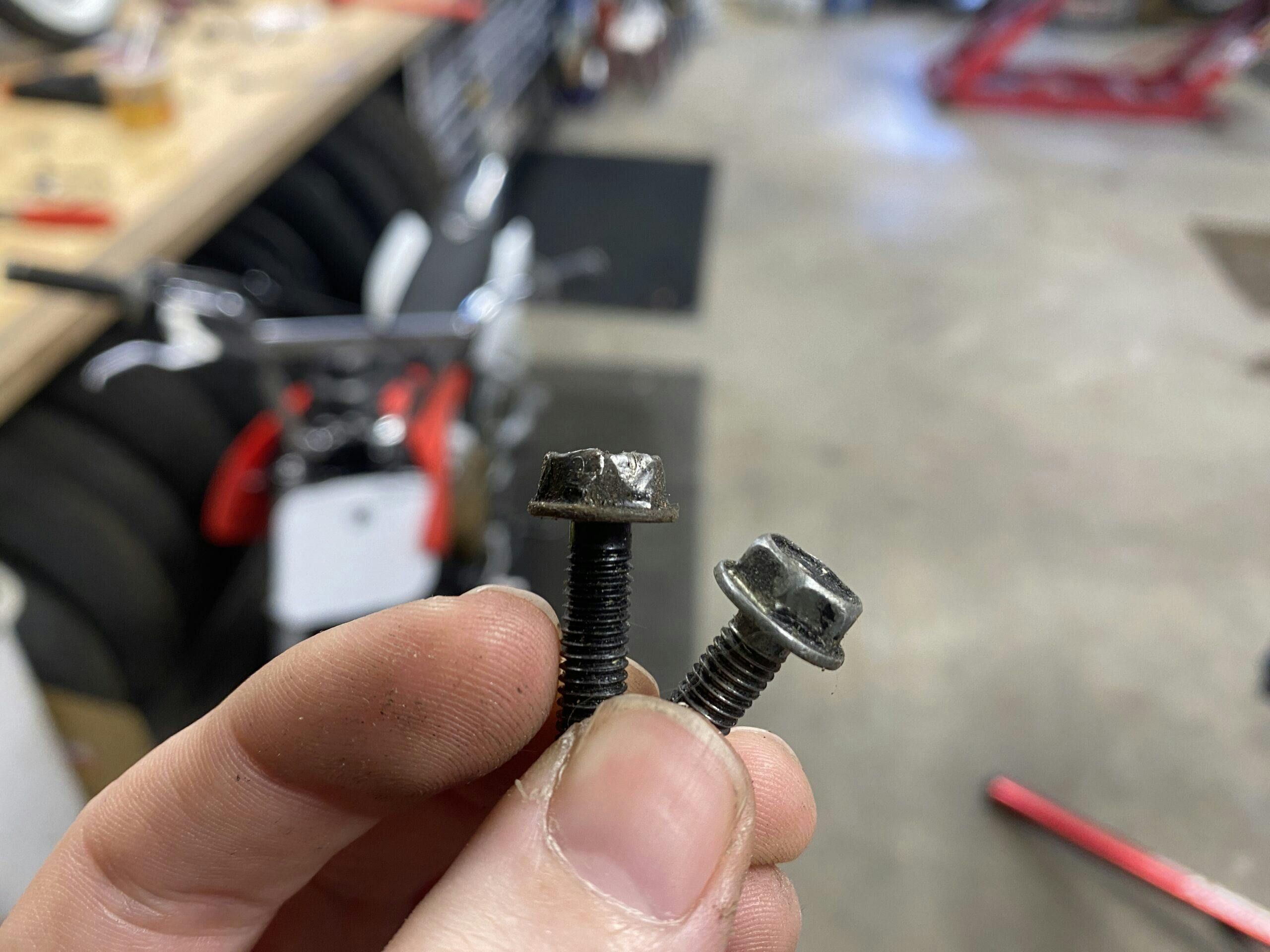








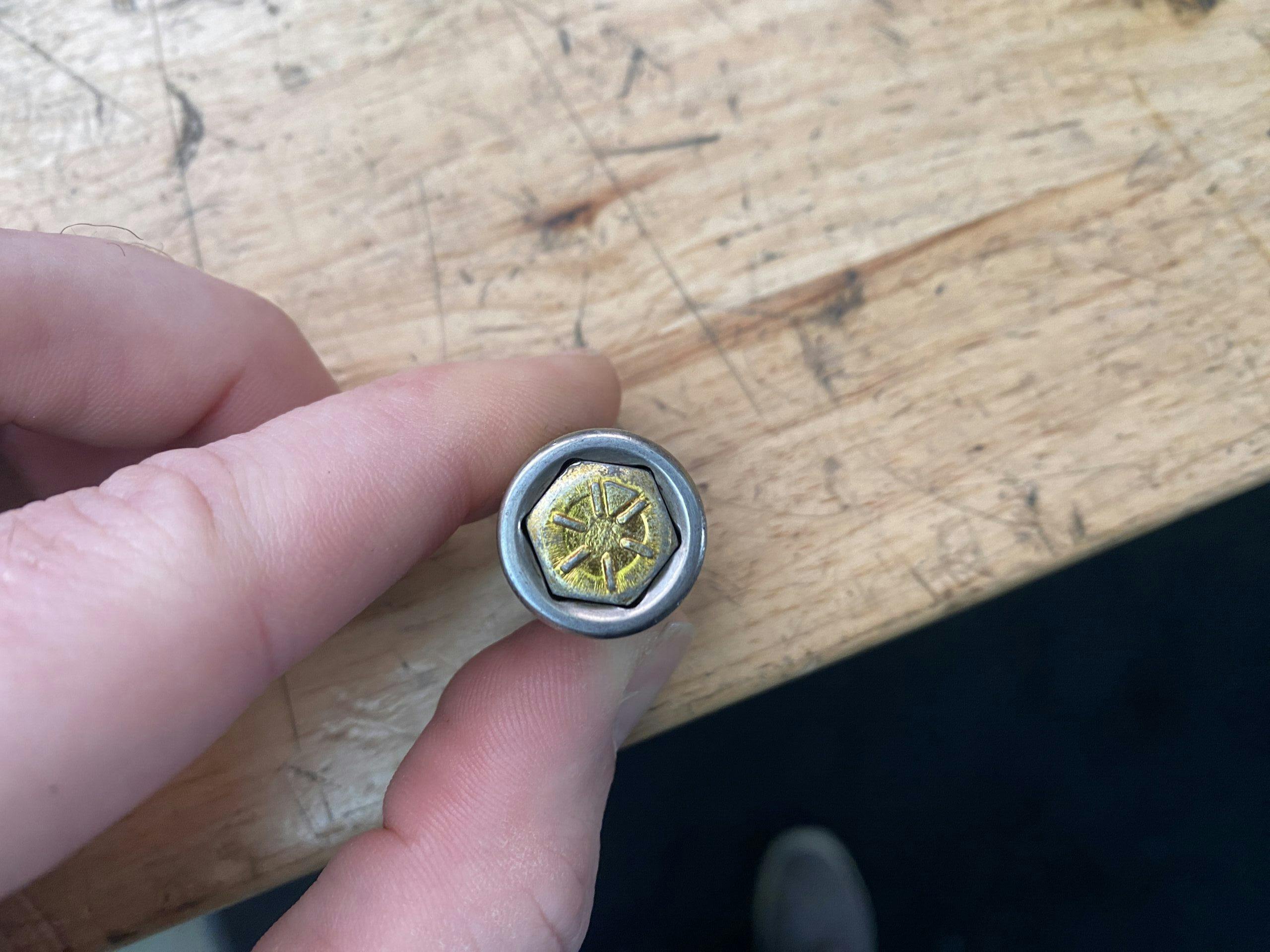


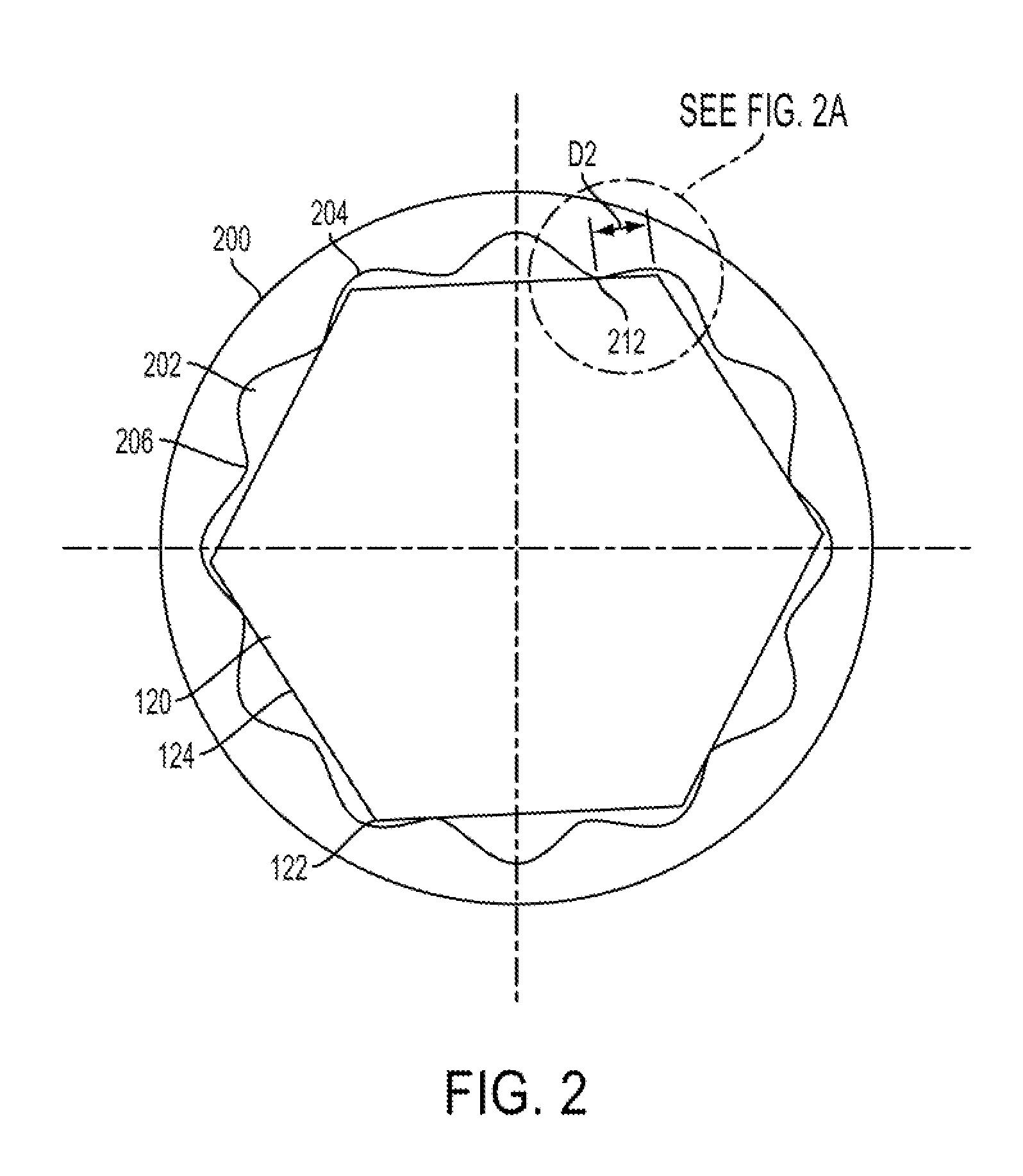








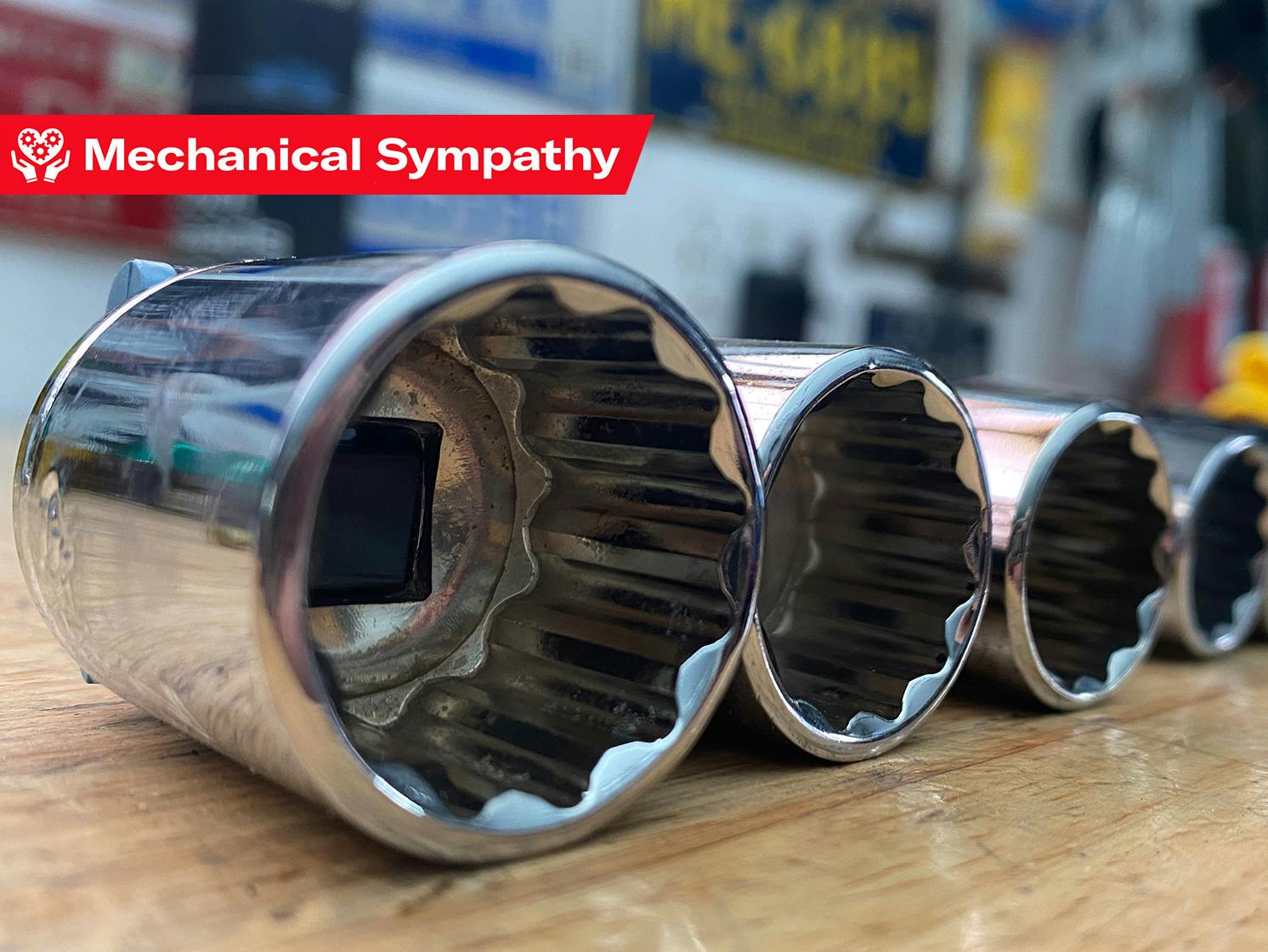
Good advice, Kyle!
Many years ago (like maybe 60!), I outfitted my then-meager tool chest with 12-point sockets (and box wrenches), under the impression that that was the best thing to have. And they were fine, really. Once though, I got a set of 6-point wrenches as a gift, and I really treated them as second-rate tools. Then – maybe 30 or 35 years ago – I really started to think about what the sockets and wrenches had to do. And a light bulb went off. I moved all of my 12-point tools down to the second-level and elevated the 6-point stuff to top-drawer status. And bought them whenever I expanded my set. There are certainly times when I’ve reached for 12-point tools when there is just such a limited turning space that one click on a ratchet is all I can get, or one-zillionth of a turn with an end wrench, so the reduced arc is handy, but for the most part, I’ll grab 6-point tools for everything hex-headed. I’ve experienced FAR fewer rounded corner bolt and nut heads than in my younger days as a result.
Going sideways with your note; I’ve bought “Impact” sockets a lot. I’ve (wrongly?) considered them stronger with their thicker wall, and somewhere, somehow, someone instilled a fear of chrome flaking off sockets and cutting me.
Oh, I do have more chrome sockets than impact, though.
Quality is a big piece of the puzzle when talking 12-points. The better the quality, the snugger the fit, and the longer it will remain snug. Why the 12-point? because when the bolt is in that location where you have to get in a yoga position and can only get one arm in, you want that socket to go on the bolt the first time. you don’t want to have to pull your ratchet back out, advance it a few clicks, try it again, and hope for the best
Of course you also need the six-point, because when you have that rusted, corroded bolt that you have to put the pipe on the wrench to bust it loose, you will round it off with the 12-point… no matter how good they are.
You have to have 10 to 1 or better of tools versus tools you need just to ensure you will have the tool you need… otherwise you end up a using the tool that just ain’t quite right and causing problems
As far as OEM hardware, I draw the line at saving damaged hardware, but I have stripped boat-anchor seized up NFG engines and other components just to get the OEM hardware off of them. Even the graded china bolts are no match for the good-ol union label US bolts from back in the 70s and earlier
I can’t believe I have overlooked the significant differences in 6 and 12 point sockets all these years. Thanks for this helpful article.
Thanks for reading!
I’ve always preferred the six point due to not rounding off the points on the head. I do have both though.
Somehow, we are buying from the same owners despite living thousands of kilometres apart…
Well, thousands of owners obviously have had 12-point sockets their whole lives! 😄
Well then, try removing a square head plug with a 6 pt socket. Go on, try it 🙂
Yeah, I do have a few 8 point sockets for those plugs that turn up here & there. Rarely need them, but they can save your bacon!
The XZN bolt you have pictured, well it’s not XZN. It’s an etorx. XZN, or triple square bits, are also 12 sides but they are not the same as a ‘regular’ 12 pointed socket.
I think I would rather use the correct tool for the job.
Vice Grips, Pipe Wrenches or Robo Lock Mac Channel Lock Pliers plus heat usually conquer all. Quenching is also a great skill to learn, and it is a skill. Here in Newfoundland Kanada, where we have road salt and brine plus salt air, we are probably the ultimate seized up place. Many a time I have had to hammer 1/2 sockets over 9/16 head bolts to get a grip. There are also left hand grip sockets that exist for that purpose. All sizes apply, just what you are dealing with at the time. Learning to weld washers, nuts etc onto broken bolts or studs is the ultimate skill to learn if you are going to work on cars from or in areas like these.
When I owned an Audi I bought a set of sockets specifically for the XZN Bolts. They still sit unused in their original packaging.
You must not have worked on my things,cause without 12 points you will not get some transmissions or motors apart
What engine and transmissions are you tearing into that have 12-point fasteners? Always curious who uses what hardware.
Subaru Headbolts immediately come to mind.
Let’s not forget those stupid 12 point 8mm bolts on my 69 VW beetle that held the torque converter to the semi automatic transmission. OK, now try to find one when you are removing the engine. Option are SnapOn (unavailable as you are working on it at home or search locally for a cheap one. Did find a cheap one, replaced with 6 pointers.
I work for caterpillar. We use 12 point bolts in a lot of our applications. I did a service letter the other day where we swapped out regular bolts for flange head 12 point bolts on a coolant neck on a 3512e deck engine.
I remember reading about Snap-on’s design 50 year ago. I thought it was nonsense back then, and still do now
If you think the original Honda bolts are hard to find try to find the Suzuki bolts with the S on the head. I’ll trade you anytime.
I’ll admit that’s part of why I chose the Hondas–parts availability. It’s starting to get a little shaky for us Honda guys, but you Suzuki and Kawasaki folks have it tough!
Thanks for the article. I’m a High School Automotive Instructor and I intend to better emphasize the preference for 6-point sockets. On a related note, since my students sometimes break tools I regularly exchange our Craftsman products at Lowes or Ace Hardware. Recently I could not find a replacement Craftsman 3/8″-drive shallow 6-point 3/4″ socket anywhere. According to Craftsman customer service the only replacement available for this size is the 12-point.
Oh wow. That is unfortunate. I have personally never loved that my Craftsman sets are often only 12-point in the 1/2″ drive when part of a kit. Mildly annoying compared to the problem you’ve got though.
Has anyone wondered how carpenters were supposed to work on square head lag screws with 6 point sockets? Only 12 point sockets will work for that job!
Um, perhaps if you’re going to caption a screw photo as an XZN fastener you could, you know, show an XZN. While I appreciate an inverted torx as much as the next person, you’re NOT going to loosen it with a 12 point socket or wrench without damaging the fastener. They’ve only been around for the past 40+ years, so…
I didn’t see this comment and I had already made a similar comment about this. I’m noticing quite a bit of typos in articles coming though my news feed lately.